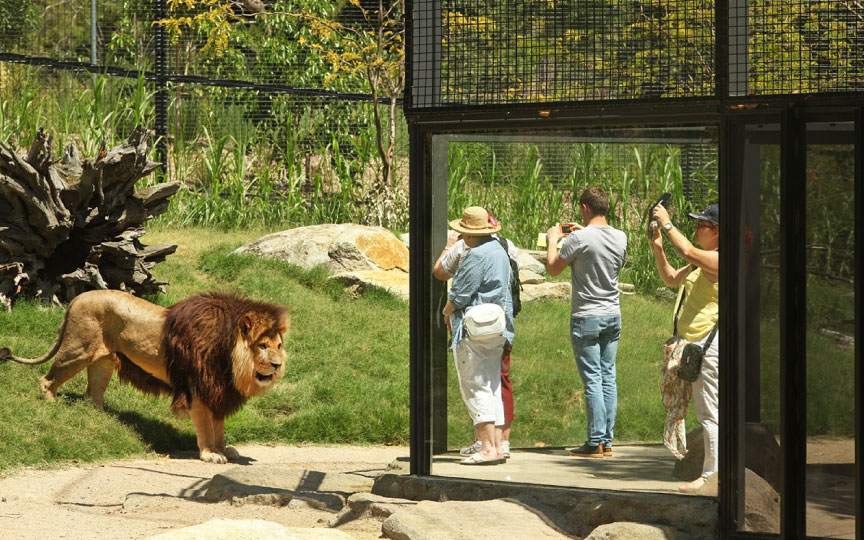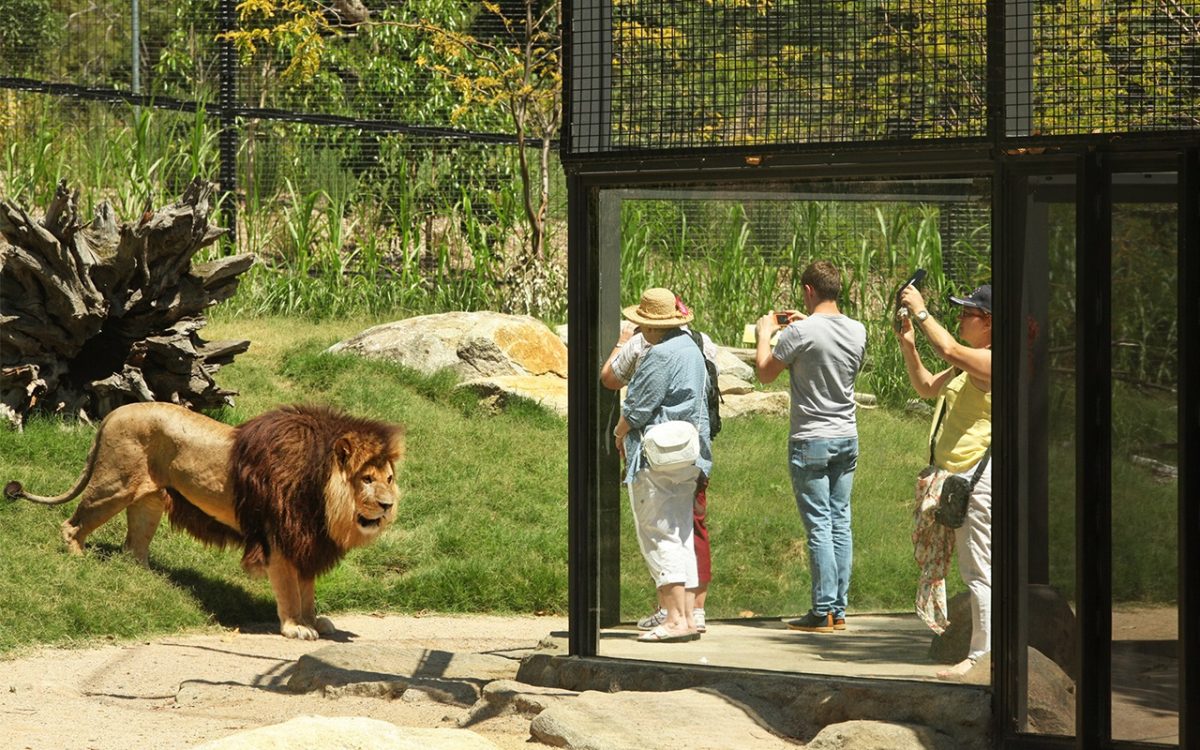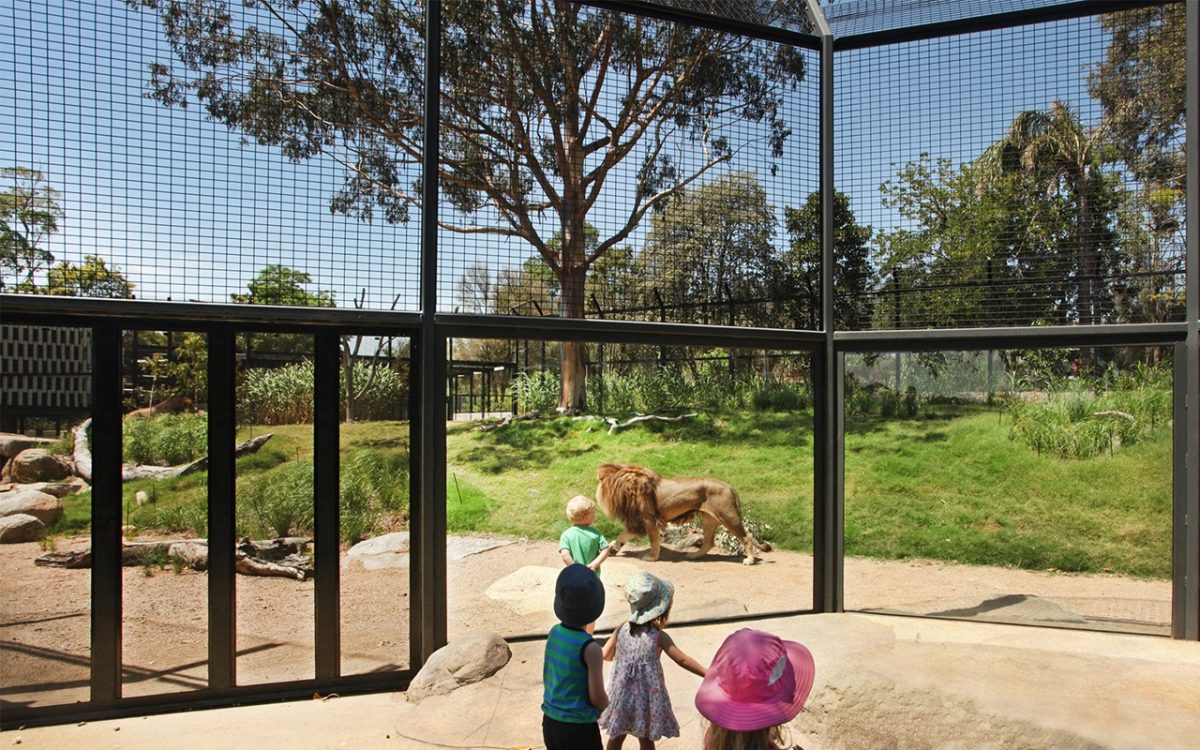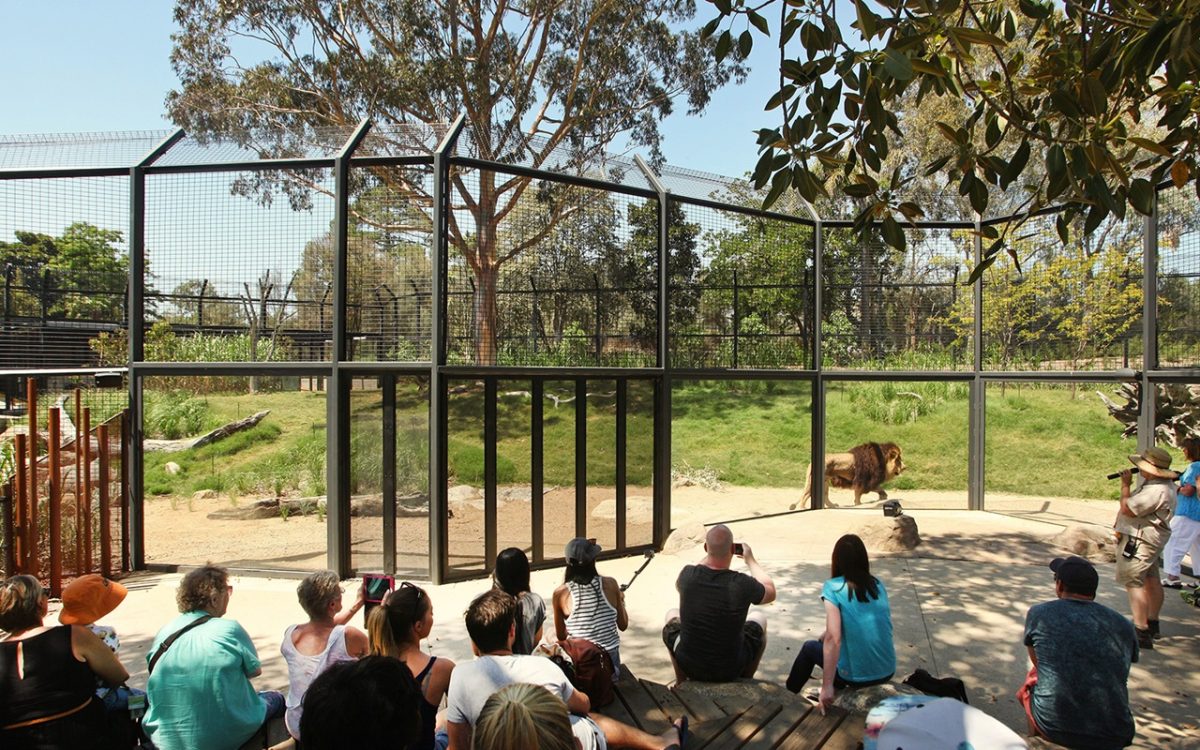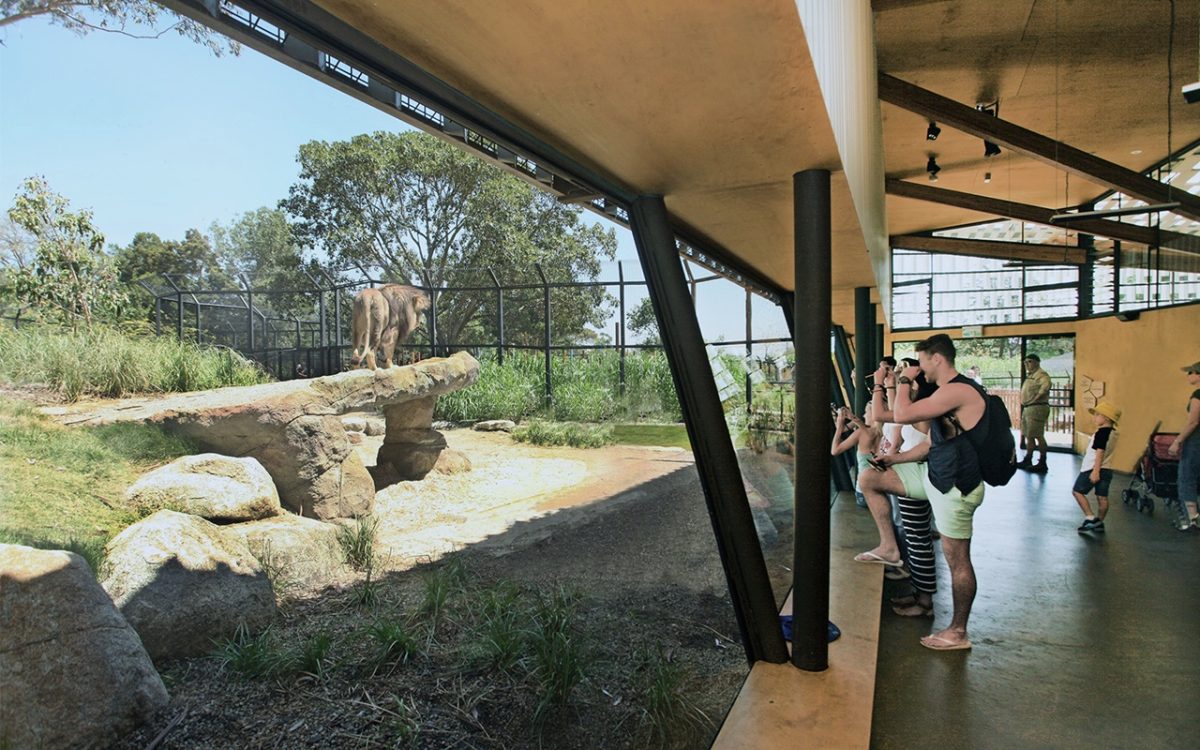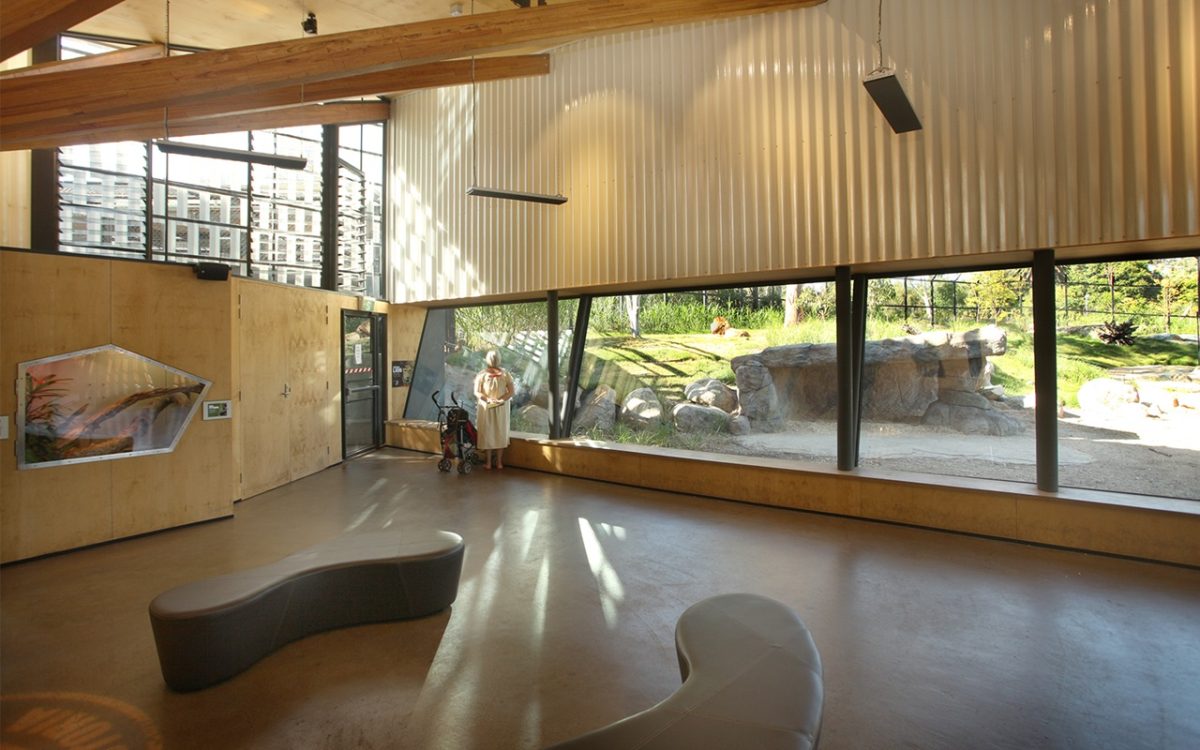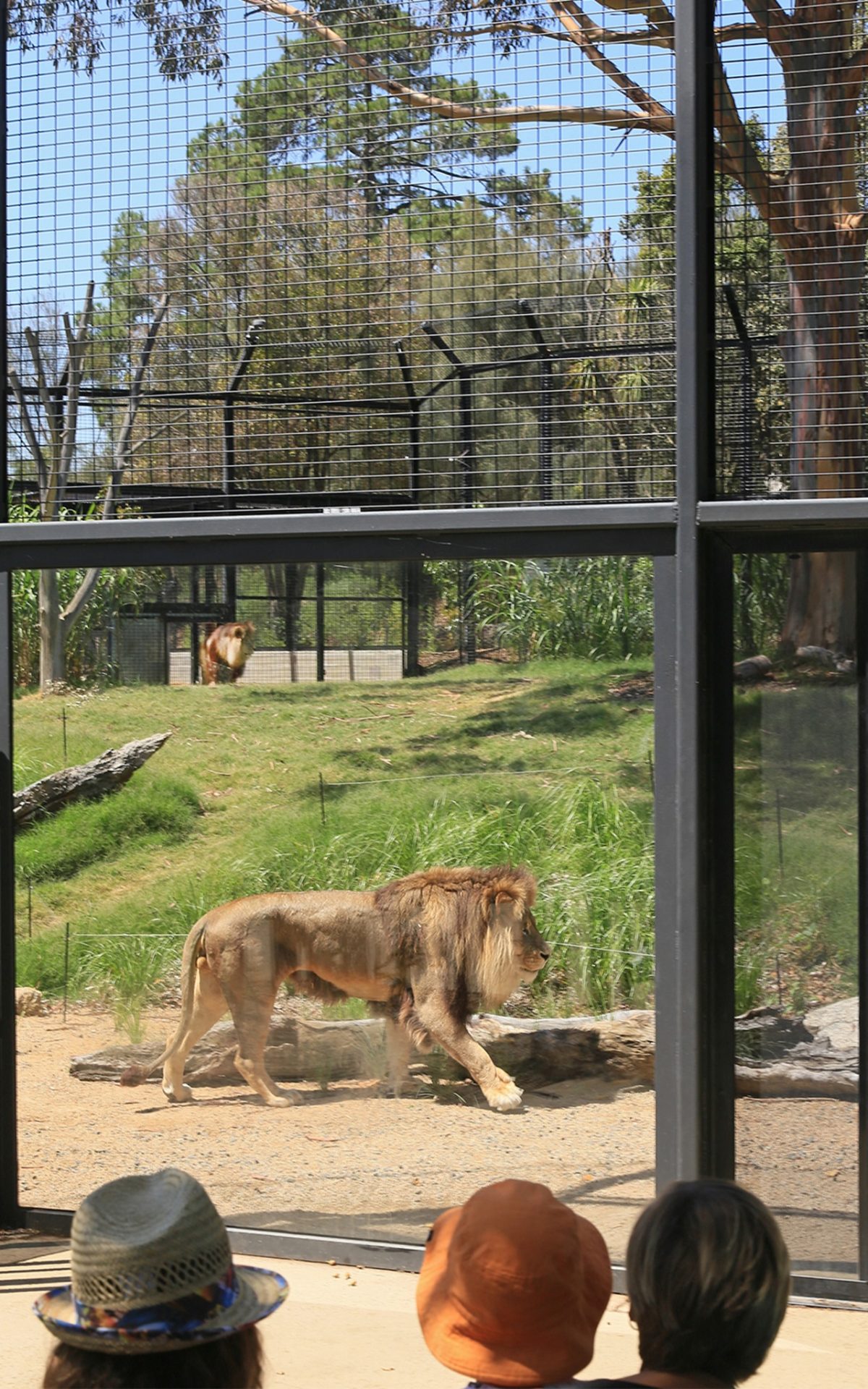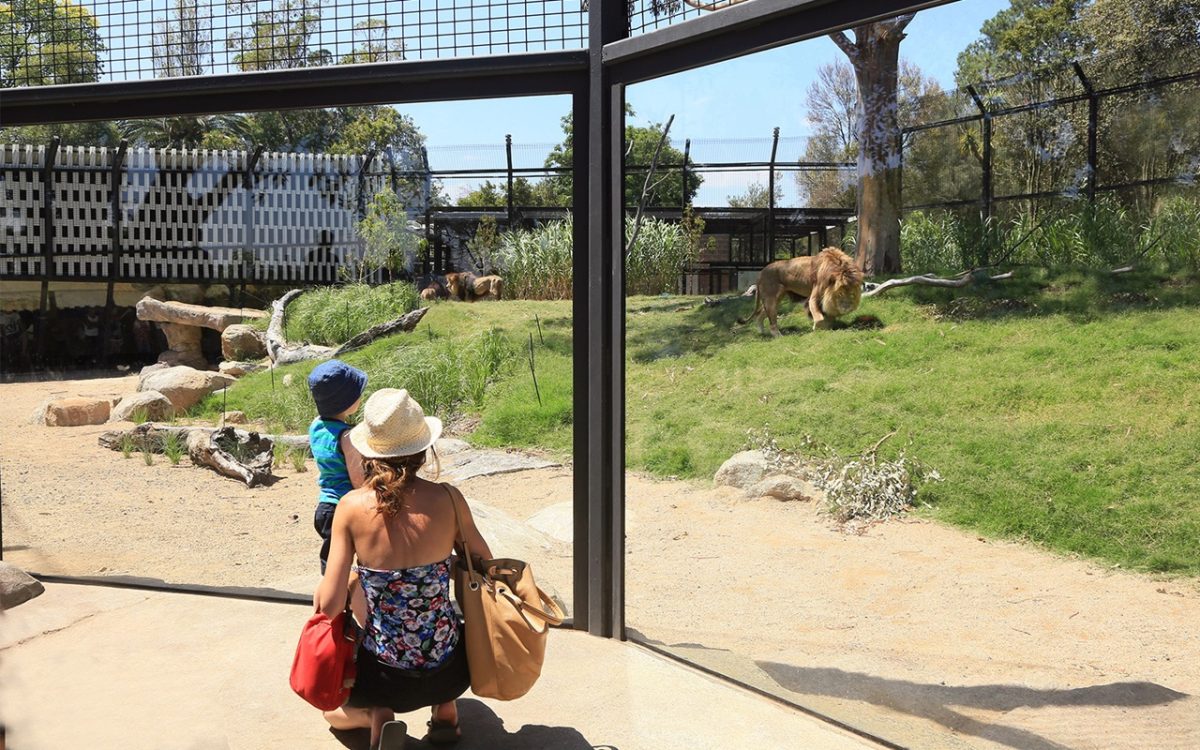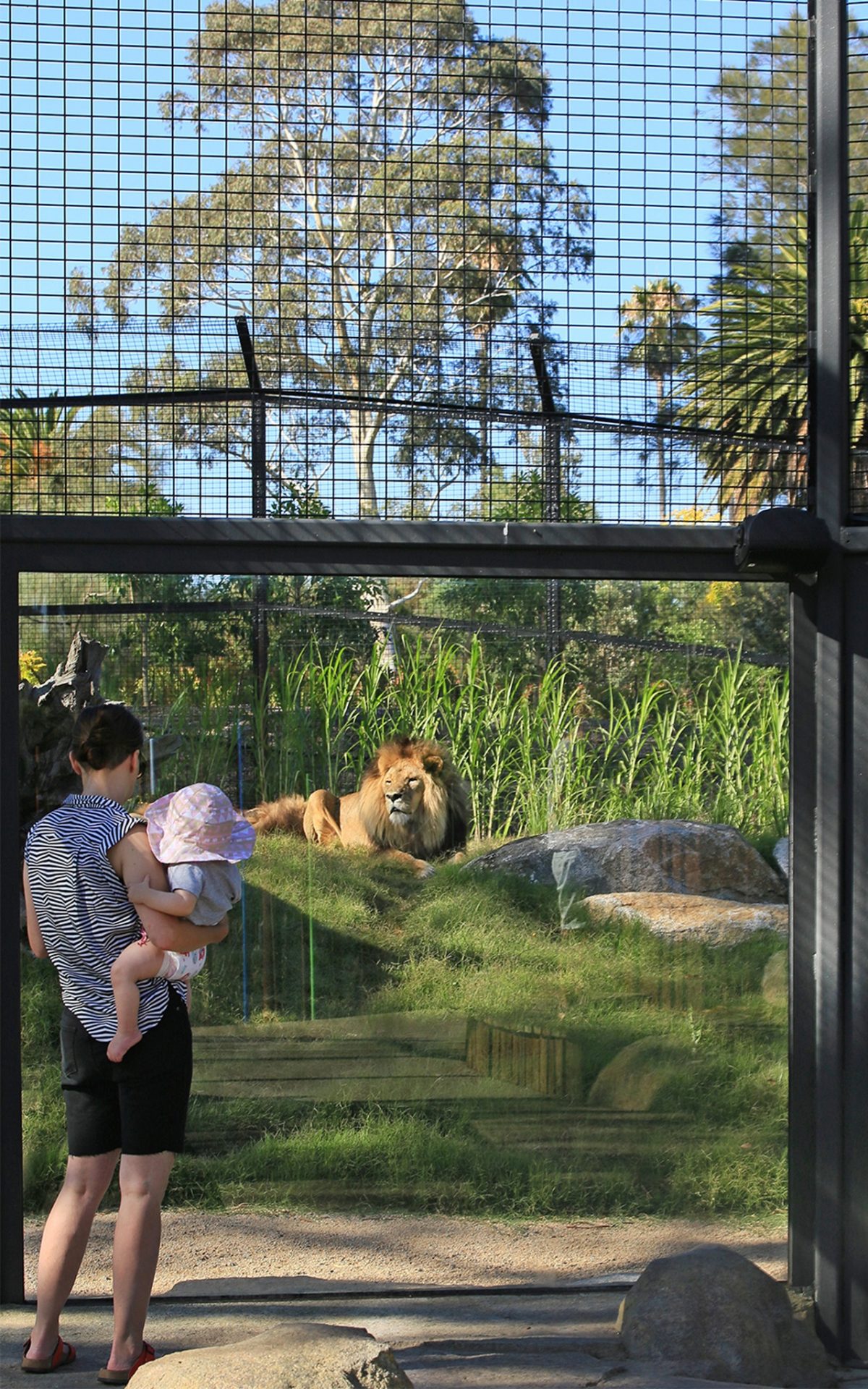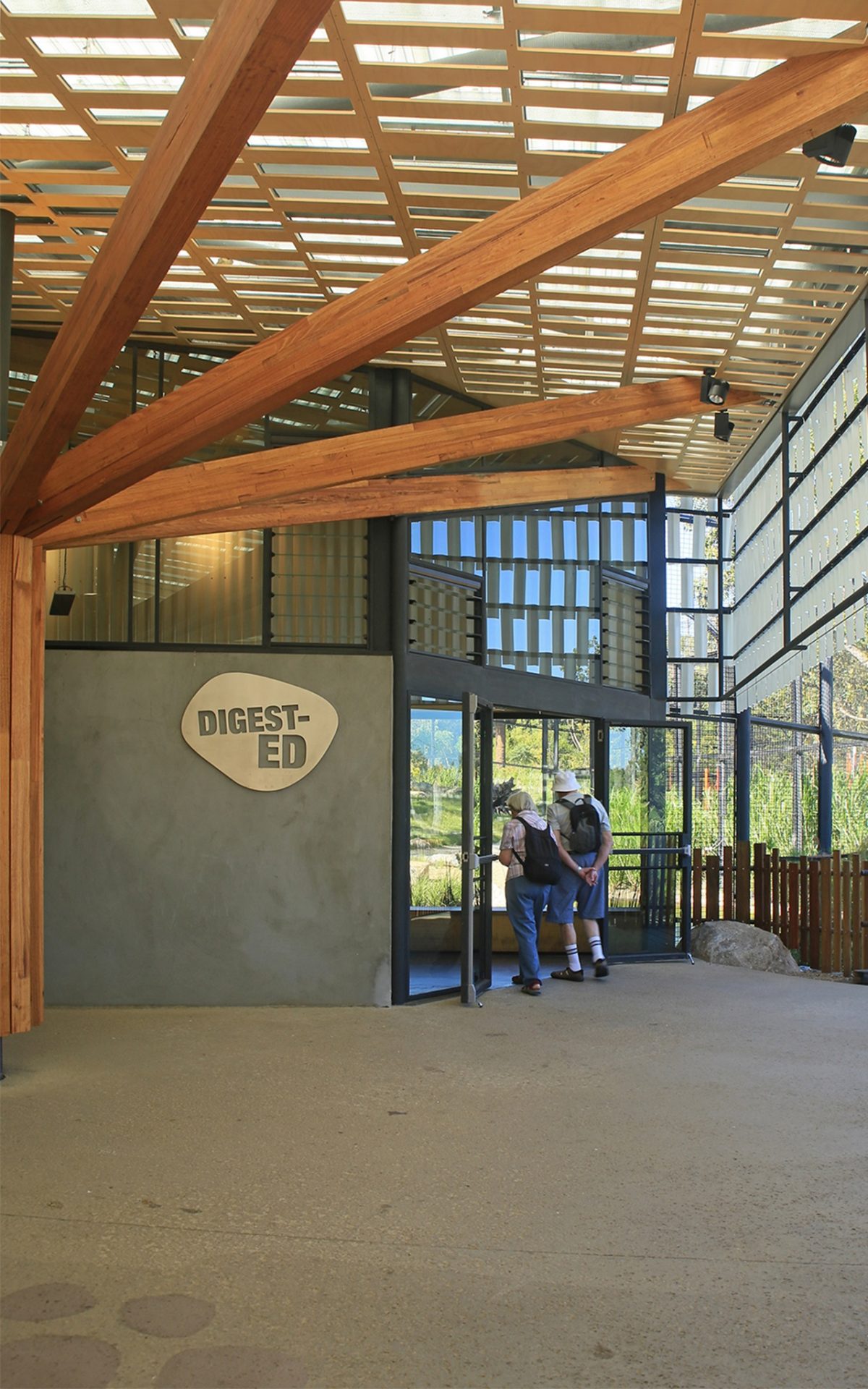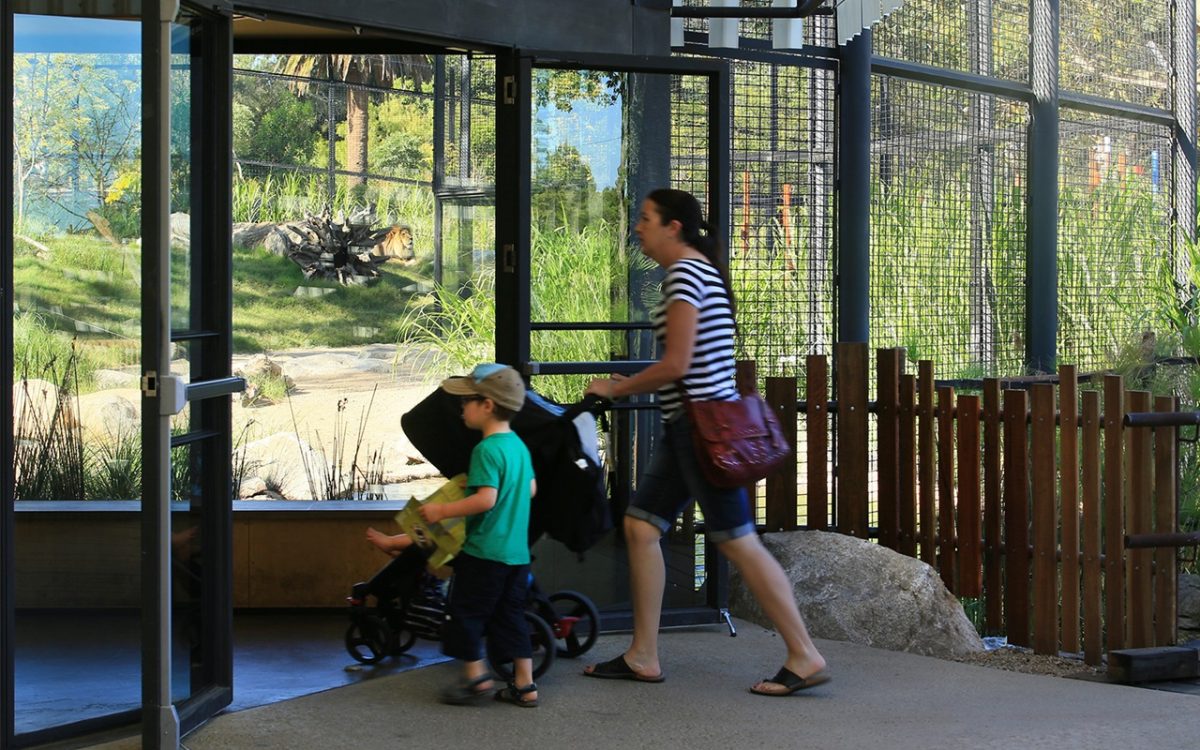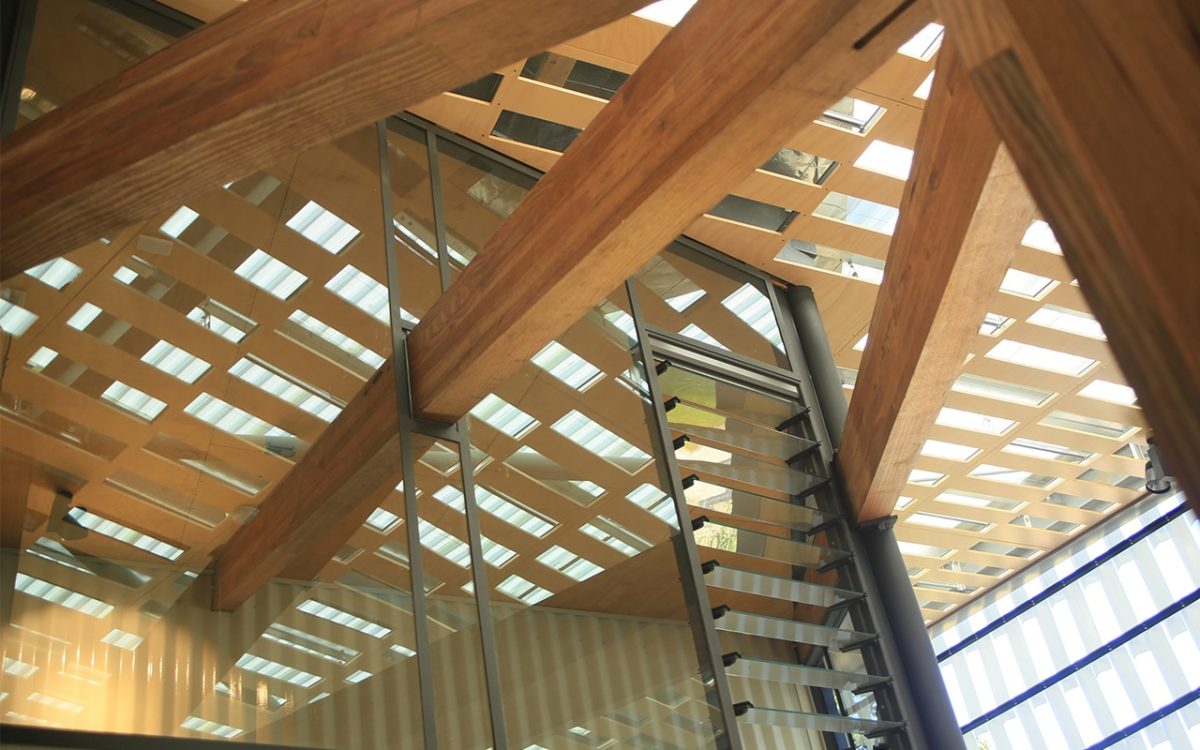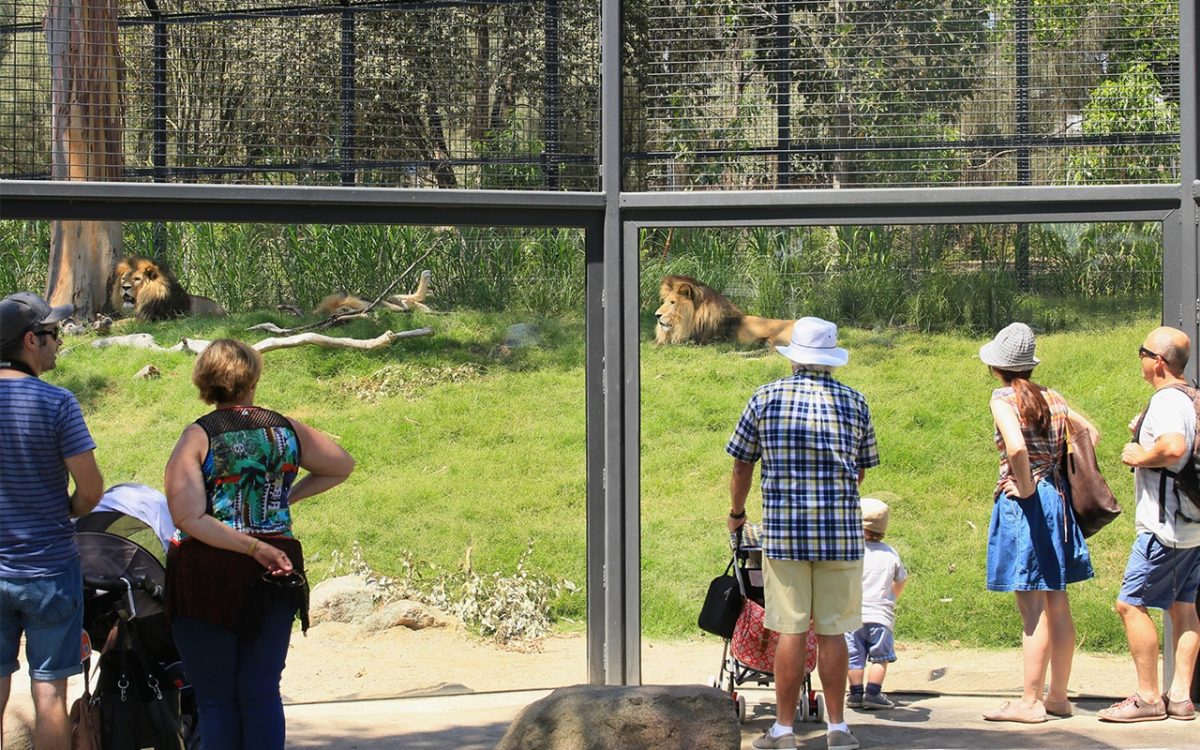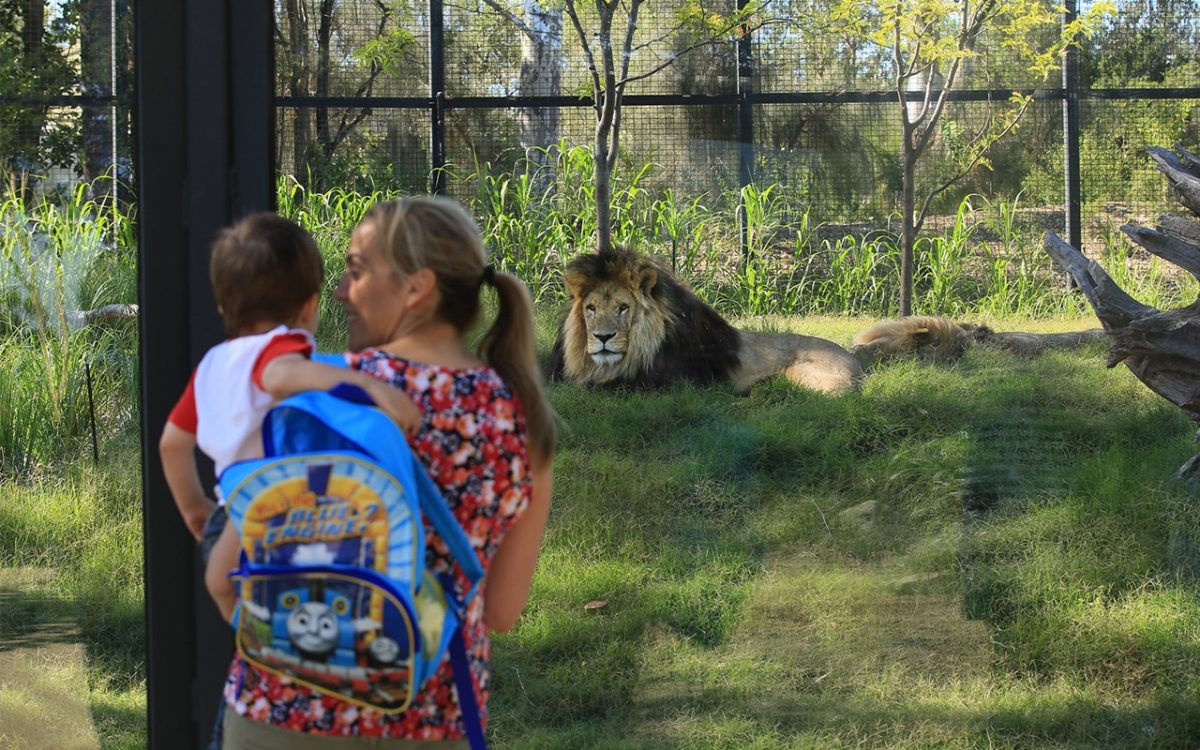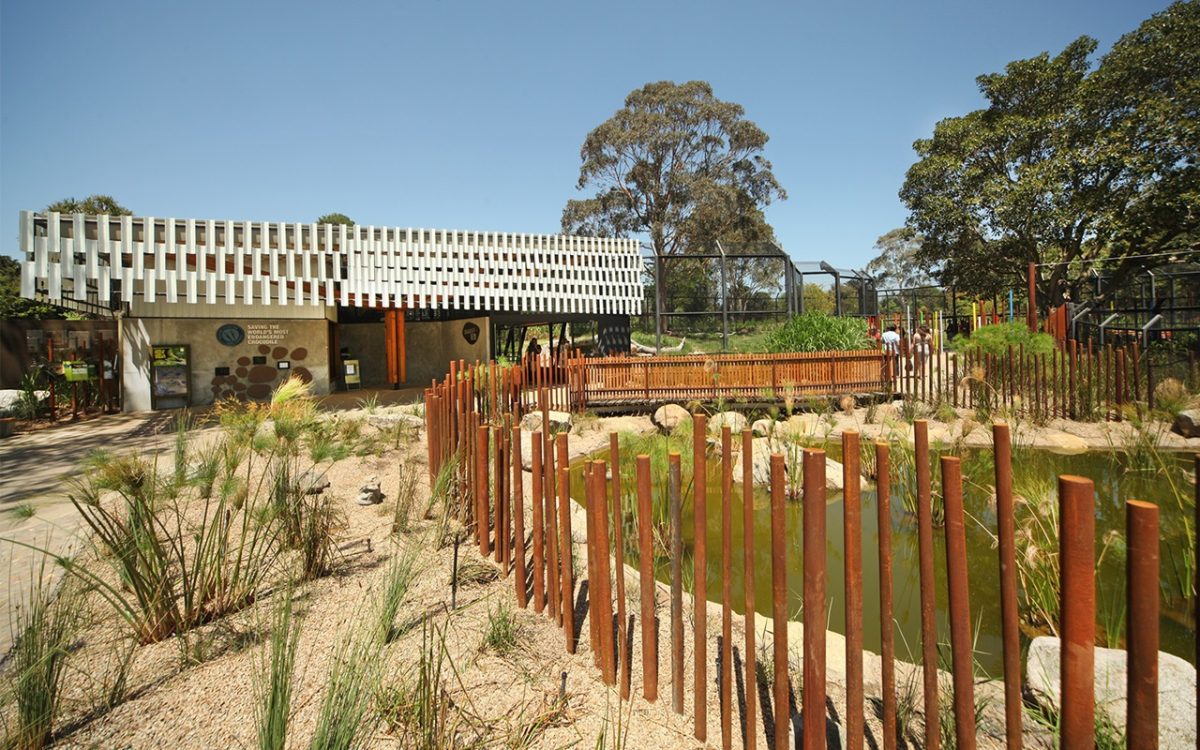Up Close & Personal
Parkville, Victoria
Visitors to Melbourne’s new Lion Gorge are only centimeters from danger and yet incredibly safe thanks to the strength and clarity of Viridian glazing which heightens their experience.
Super tough, super clear and super engaging, Melbourne Zoo’s new lion and wild African dog enclosures heighten the experience between human and beast. To achieve the required connection, 19 weighty panels of Viridian’s custom super tough, SuperClearTM were needed for a result that virtually disappears into its setting.
Melbourne Zoo’s recent upgrading results in two stand-out exhibits for lemurs and lions. Coincidentally, both have been created by the small, but design driven architecture practice OLA. Hardly surprising either, that the firm collaborated on this project with landscape architects Urban Initiatives and interpretive designers Arterial Design.
The buzzword ‘interactive’ seems to be the buzz in both enclosures – lemurs allowed to romp around and among visitors, while the lions and adjacent wild African dogs move at a safe, but often very close proximity to visitors.
A streamlined combination of steel mesh and Viridian SuperClearTM create an unobtrusive, quite seamless link between visitor and beast. Encounter rather than enclosure seems to capture the design spirit. The lions’ natural habitat it may not be, but superior to many zoos for sure.
Striking the balance of animal privacy and patron entertainment is a test. OLA and team with Melbourne Zoo just about perfect the process. A winding path wraps around multiple display ‘windows’ to provide framed views into the lion habitat, African wild dog and soon to be occupied, crocodile enclosure. Visitors and lions seeking respite from the elements can easily find shelter and private space.
_
Phil Snowdon, principal at OLA architects spoke with Peter Hyatt about creating a habitat respectful to lions and wild dogs, yet thrilling and revealing for visitors:
PH You’re quickly becoming a zoo enclosure expert. Or should that be an expert at animal and people environments?
PS That’s a good question. We’re becoming expert in working with zoos who probably spend more time thinking about the enclosures than we do. As architects our focus is on the buildings that educate and entertain visitors. The landscape architects and interpretive designers focus more on the enclosures and visitor interaction. Together we assemble the complete experience.
The lion enclosure is by necessity vastly different from the lemur enclosure. What are the similarities and differences?
Part of what we try to achieve is a feeling of immersion into an experience and another part is to create the opportunity for people to make a real and emotional connection with wildlife and nature. The Lemurs is a walk-through facility so immersion was reasonably simple. The emotional connection is amplified because of the unique and other-worldly nature of the exhibit. At Lion Gorge, obviously, we’re not doing a walk through. Immersion is achieved by creating an over-arching theme of animals and visitors sharing a waterhole, and an architectural “refuge tree” for visitor’s to retreat to. The connection is largely through the unexpected proximity to the large predators, thanks in large part to the use of glass.
Typically we don’t associate architecture with such places. In the past it has been a grill or wire fence between visitors and animals. Architecture is being absorbed and made integral. What does this provide?
Built environments have been a part of exhibits for a long time but often disguised as mud, or rock-faces or themed to visually link the exhibit to a pre-conceived idea of primitive architecture of a region. We think a contemporary architectural approach helps to explain the reality of the conservation issues at hand. Architecture can become part of the education process and tool to help us better understand how to conserve various species.
How does sustainability influence the design?
We re-used over 95% of the demolished material from the previous exhibit and there’s an array of solar panels on the roof that help it to be energy-neutral. The air conditioning is pretty much driven by the solar panels and all the other services are driven by the solar panels. The louvered windows facilitate natural airflow. We handled that with orientation, screening and use of the surrounding landscape features.
“You might not experience all of the scent, sound, or smell through the glass, but you get such a complete visual connection.” Phil Snowdon, Principal OLA Architects
What role does glass play in this particular solution, having a virtually invisible barrier as alternative to grills or steel mesh and cages?
You might not experience all of the scent, sound, or smell through the glass, but you get such a complete visual connection. The animals will come right up to visitors. People will feel like they can touch the animal. Enabling that all-important emotional connection. We have mesh at other viewing points so there is the other experience as well, but it isn’t as spectacular or confronting.
The lemur enclosure for example is incredibly interactive. You obviously have created an interactive lion enclosure without risk of losing life or limb, or compromising animal quality of life.
Glass plays a big part of that solution. It allows for moments where the fenced enclosure is not obvious, showcasing the primal qualities of the top end predator’s on exhibit.
What were the major design challenges?
Setting the glass as a barrier to the impact of a fully grown lion was probably the biggest challenge. We had a facade engineer calculate the impact of a lion running full steam into the glass. This resulted in Viridian manufacturing a custom make up of various sheets of interlayers and glass. The visitor cannot read the thickness and so we hope they will feel a little vulnerable at times.
It’s set on an incline?
In the education centre, the glazing at the top is set on an incline outwards at the top so that any reflection is towards the ceiling which is the darkest space and doesn’t affect the view out towards the lions.
What do you hope your architecture brings to the landscape, visitors and interests of the animals?
We hope that the architecture is interpreted as an integral part of the whole Lion Gorge experience. It is intended to contribute to how people interact with the exhibit and allow them to come away with the key conservation message the zoo has for the precinct.
What is the role of natural light and breeze within your design?
The building has large areas of glass and also a translucent cladding material and designed to have the natural ambience of being under a tree. There’s efficient evaporative air conditioning that requires natural ventilation while in use. The high level glazing can be opened up for ample cross-ventilation.
Any issues working with such large, weighty glass on this scale?
The windows are big. They weigh around 750 kg. each – roughly three times the weight of each of the three lions who live there. The builders spent considerable time working out how to install the glass and assisted us in detailing the glass fixing. The frames are all custom-made steel and the glass panels were craned in over the building and finally fixed in place manually.
What level of research is required for such an exhibit?
Generally we spend a lot of time researching each species to find out how they live, and how each animal will cope with different environments and we rely heavily on the zoo’s experience and direction. We have a Life Sciences expert in our design team who has worked in zoos for many years to help us with important briefing information.
A tasty menu, seemingly within easy reach?
Definitely. There were a couple of interesting moments at the facility opening. The lions thought they had a free feed when they saw people behind the glass. They seem especially attracted to little kids who gave a great reaction.
Glass is the material that can be made to barely exist because of its high transparency. It permits occupants to ‘shift’ or transport to another place. Many materials are decorative, or they exist to make much more of a ‘solid’ statement.
That’s true. It can have a far greater purpose than that thing to look through. Here it is critical to the whole place coming alive and acting as a truly interactive attraction. Glass heightens that immediate environment in a way impossible with almost any other material.
Is there an aspect of this project that gives you a particular satisfaction?
Seeing people enjoy and engage with the space and really getting excited about being up so close to the lions. We believe the zoo’s visitor numbers are up by about 7,000 through January – a figure hopefully directly related to the new exhibit.
